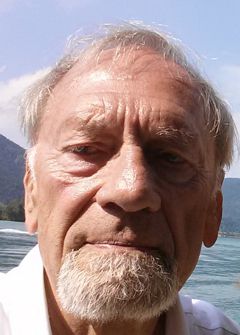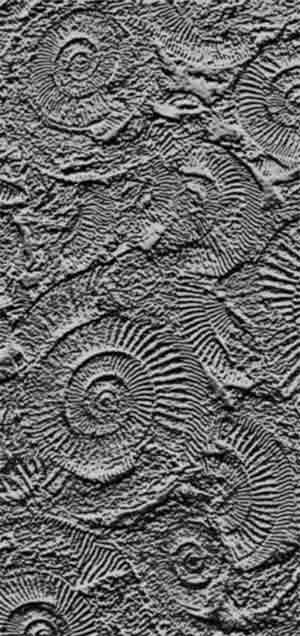Curriculum vitae
Walter L. Pohl

Professor Emeritus at Technical University Carolo-Wilhelmina at Braunschweig in Germany (my life-long affiliation since having been called in 1984), PhD (Vienna), Fellow of The African Geological Society, Fellow of the Australasian Institute of Mining and Metallurgy: AusIMM), Member of the Society of Economic Geologists (SEG), the Geological Society of America (GSA), the American Association of Petroleum Geologists (AAPG), the Society of Geology Applied to Mineral Deposits (SGA) and Corresponding Member of the Austrian Academy of Sciences (life-long since 1992).
Aspirations for outdoors work and adventure made me study geology, petrology, mineralogy and palaeontology at the University of Vienna (1959-64). Thereafter, meeting my aspirations to work in industry, Professors W.E. Petrascheck (Economic Geology) and E. Clar (General and Engineering Geology) entrusted me with a doctoral research project: Geological underground mapping, lithostratigraphy, paleogeography and synthesis of the marginal Hausruck lignite basin and mining district North of the Eastern Alps.
Immediately after my doctorate (PhD 1966), a resource conglomerate in Austria employed me in order to provide geological services to all their mines and quarries. In 1970, I was offered the position of Senior Geologist at Gunpowder and Mammoth copper mines (Mt. Isa region, Queensland, Australia), followed by exploration for coal in the Bowen Basin, and copper near Duchess. Called away again (1972), I joined the Geological Survey of Rwanda (Africa) as the economic geologist in a small team; the main task was geological mapping of tungsten and tin mines, both underground and open pit operations, structural and genetic modelling, and developing concepts for exploration. In 1974, my mentor Prof. Petrascheck recalled me as a postdoc in charge of overseas projects and related teaching at the University of Mining (Austria). This brought about that I acquired the "Habilitation" in Applied Geology (the academic qualification of autonomous teaching at university, in 1976), and an Associate Professorship in 1980. During this period, my work place was mainly Africa but projects called me to Arabia, India, Australia, the Americas and Turkey. In Kenya, for example, I led a major mapping and greenfield exploration project of extensive areas in the Tsavo (main resource: gemstones) and South Coast regions (an apatite-REE carbonatite and rift-related Ba-Pb-Zn veins).
In 1984, I accepted a full professorship of Applied Geology at the Technical University of Braunschweig (Germany). Although already in 1966, my first job did include complex reserve estimation, geotechnics and water problems in various mines, teaching students majoring in geology, ecology and civil engineering considerably deepened my grasp of the theoretical background. Soon, I revived my work in Africa and as a framework, I established an international network within UNESCOs International Geological Correlation Program (IGCP) with the title "Geological Evolution and Metallogeny of the Mesoproterozoic Kibara Belt, Central Africa" (1987-91). At the same time, I designed and executed research projects that integrated economic geology with engineering geology, hydrogeology and environmental management. This sharpened my skills in environmental issues of mining.
In that spirit in 2007, I launched an international research program entitled "Sustainable Restitution/Recultivation of Artisanal Tantalum Mining Wasteland in Central Africa" (see Photo Gallery). Until the end of 2008, when I left Germany, I acted as its coordinator. Prof. Bernd Lehmann of Clausthal University took over and lead the team until the end of the program in December 2014.
Although I do enjoy academic teaching, I loved a string of consulting assignments for geological state surveys, mining companies and for supranational/international organisations such as EU, UNDP and UNESCO.
Part of my work resulted in more than 100 papers concerning various aspects of mineral deposits, the mining environment and metallogeny, and several editions of the German-language standard textbook of Lagerstättenkunde (Mineral Deposits), which I inherited from my mentor Walter E. Petrascheck. The first edition of my English-language Economic Geology book (destined for a global readership) appeared in Mai 2011. An updated and thoroughly revised 2nd edition was published in 2020. Details can be found on my website at https://www.walterpohl.com/.
My favourite achievements apart from the books include geological maps of the underground tin mine Rutongo in Rwanda (1978), two geological quarter degree sheets that I surveyed and published with the Geological Survey of Kenya (1979 and 1980), a seminal paper on metamorphogenic ore deposits (1992), and the discovery of new ore bodies that resulted from my consulting. In recent years, my life-long fascination with theory and practice of metallogeny resulted in two papers (2022 and 2024) (see https://walterpohl.com/publications.html). Geological mapping however, of for example, the volcanic architecture of the Cabo de Gata (Spain) epithermal gold district, or of the underground exposures in the Asse salt mine and radioactive waste repository (Germany) with student groups are highlights not reflected in my publications list. The biggest privilege was my role in training PhDs and postdocs in economic and environmental geology.
A number of research funding organisations, and journals such as the Arabian Journal of Geosciences, Applied Earth Science (formerly IMM Transactions B), Contributions to Mineralogy and Petrology, Environmental Earth Sciences, Geochemistry/Chemie der Erde, Geochimica et Cosmochimica Acta , Geologica Belgica , Gondwana Research, International Journal of Earth Sciences , Journal of African Earth Sciences , Journal of Geochemical Exploration, Mineralium Deposita, the MDPI open access journals Minerals, Geoscience, and Remote Sensing in Geology ; furthermore, Mine Water and the Environment , Mineralogy and Petrology , Ore Geology Reviews and Precambrian Research use my services as a reviewer or member of the Editorial Board. I am fairly conversant in writing and speaking English and French, and Spanish at an intermediate level. German is my native language.
For several years now, I developed an interest in philosophy including ethics. My credo concerning the desirable role of mining is subsumed in the last sentence of the Epilogue to my EG2 book*:
In conclusion, allow me to reiterate that responsively managed extraction of minerals has every potential to contribute to the well-being of mankind, to increase material prosperity, to maintain a sustainable and vital social and natural environment, and peace.
* Pohl W.L. (2020) Economic Geology, Principles and Practice: Metals, Minerals, Coal and Hydrocarbons – an Introduction to Formation and Sustainable Exploitation of Mineral Deposits. 2nd ed. 755 pp. Schweizerbart Science Publishers, Stuttgart.
.
5 January 2025
.
